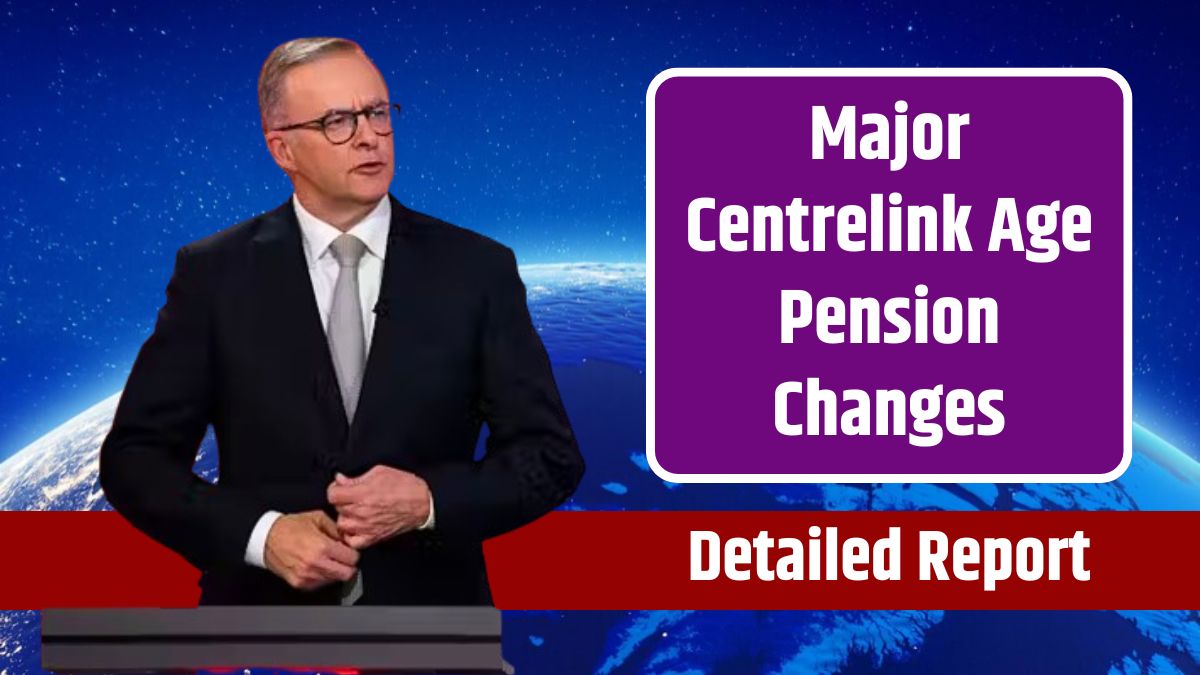If you receive an Age Pension through Centrelink, there’s exciting news for you. Starting July 1, 2024, significant changes to the Centrelink Age Pension have been implemented. This article knows everything you need to know about these updates and how they may impact your pension.
Significant Changes
As the new fiscal year begins in Australia, various changes are set to affect senior citizens. While the basic pension rates remain the same, adjustments to income and asset thresholds mean that some pensioners could receive higher payments or newly qualify for the pension. These changes aim to boost the economic stability of older Australians.
Despite an increase in superannuation participation, the Age Pension remains the primary income source for millions of seniors. According to Rice Warner, nearly 39% of Australians rely on age pensions, with 24% receiving a partial pension. Read on to know more about the Centrelink Age Pension changes.
Crucial Shifts
To qualify for the Age Pension, you must be 67 or older and pass the asset and income tests. Starting Monday, these thresholds will be adjusted for inflation. This adjustment allows individuals to own more assets and earn more income without affecting their payments. Some previously ineligible citizens may now qualify for the Age Pension, while those on a partial pension may now receive the full pension.
Significant changes to the Superannuation Pension also begin in July. The employer’s contribution to the Superannuation Scheme will increase from 11% to 11.5%, boosting workers’ retirement funds. Additionally, pre-tax contribution limits rise to $30,000, and post-tax contributions increase to $120,000.
Asset Thresholds
The asset thresholds for full Age Pension eligibility have been adjusted. A single homeowner can now have assets worth up to $314,000, and a single non-homeowner can have up to $566,000. Previously, these caps were $301,750 and $543,750, respectively. Married couples can now have combined assets of $470,000 to receive the full pension, up from $451,500. Non-homeowner couples can hold assets up to $722,000, an increase from $693,500.
Here’s a table to illustrate these changes:
| Circumstances | Homeowner | Non-homeowner |
|---|---|---|
| Single | $314,000 | $566,000 |
| Couple, combined | $470,000 | $722,000 |
For partial pensions, the thresholds have also been raised. A single homeowner can now have assets worth up to $686,250, and a single non-homeowner up to $938,250. Previously, these limits were $674,000 and $916,000. For couples, the new combined asset limits are $1,031,000 for homeowners and $1,283,000 for non-homeowners.
Here’s a table to clarify the new partial pension thresholds:
| Circumstances | Homeowner | Non-homeowner |
|---|---|---|
| Single | $686,250 | $938,250 |
| Couple, combined | $1,031,000 | $1,283,000 |
Income Changes
The income thresholds have also been updated. For single pensioners, the threshold has increased to $212 per fortnight, up from $202. This means single pensioners can earn up to $212 per fortnight and still receive the full pension. For couples, the threshold has increased to $372 per fortnight, up from $360.
If your income exceeds these thresholds, your pension will reduce by 50 cents for every dollar earned over the limit. The maximum income limits have also increased. Singles can now earn up to $2,444.60 per fortnight, while couples can earn up to $3,737.60 per fortnight before their pension is entirely phased out.
These changes to the Age Pension in Australia will impact thousands of older citizens starting July 1. It’s important to note that while the basic pension rate remains unchanged, adjustments to the asset and income thresholds mean some retirees will see higher payouts.
Stay informed by regularly checking official government websites for the latest updates on these changes.
FAQs
What are the new Age Pension asset thresholds?
Single homeowners: $314,000; non-homeowners: $566,000.
How much can I earn and still receive a full pension?
Singles: $212/fortnight; couples: $372/fortnight.
What is the new Superannuation contribution rate?
Employer contributions increased to 11.5%.
When do these changes take effect?
From July 1, 2024.
Where can I get more details?
Check the official Centrelink and government websites.








